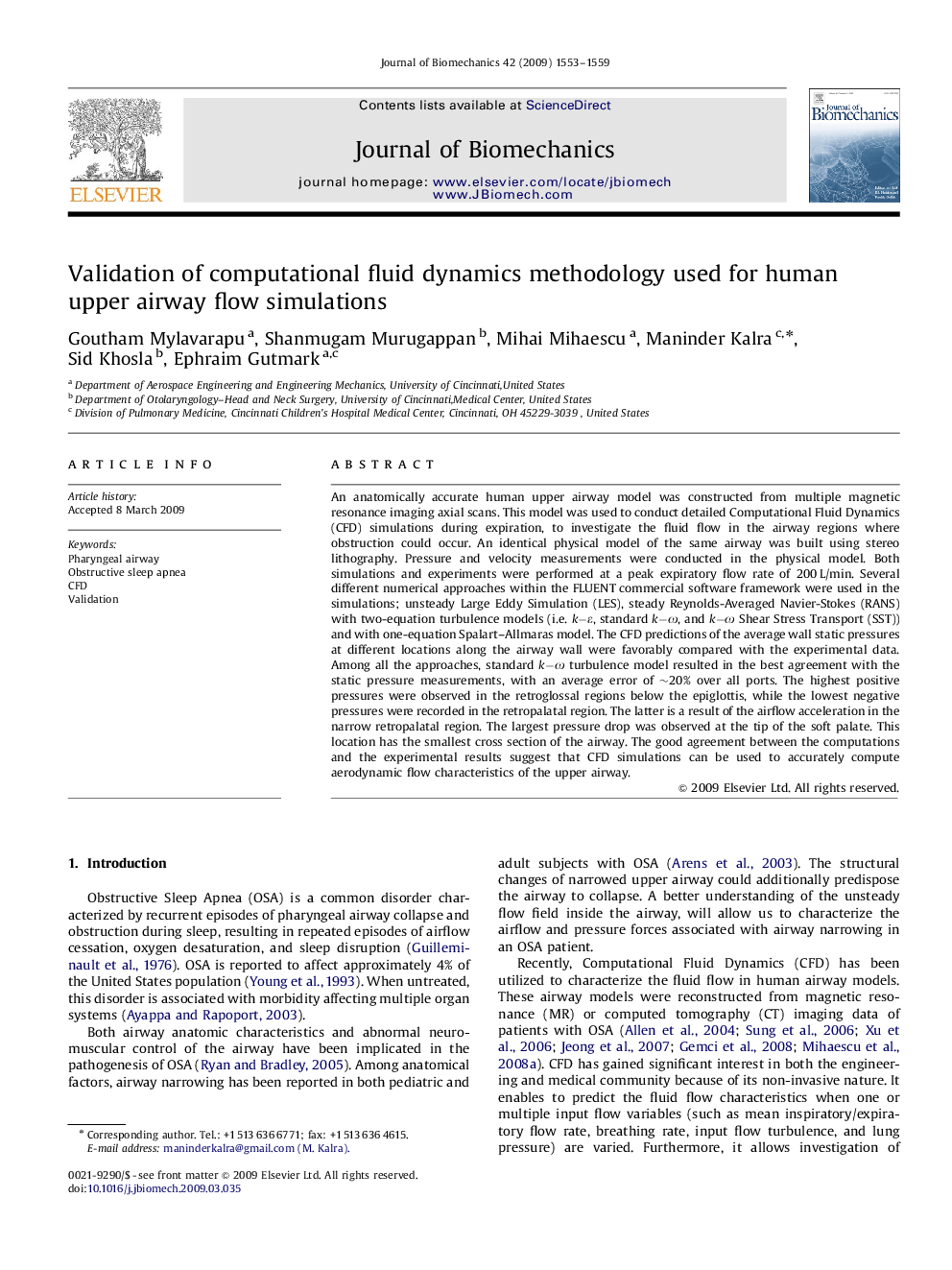| Article ID | Journal | Published Year | Pages | File Type |
|---|---|---|---|---|
| 872862 | Journal of Biomechanics | 2009 | 7 Pages |
An anatomically accurate human upper airway model was constructed from multiple magnetic resonance imaging axial scans. This model was used to conduct detailed Computational Fluid Dynamics (CFD) simulations during expiration, to investigate the fluid flow in the airway regions where obstruction could occur. An identical physical model of the same airway was built using stereo lithography. Pressure and velocity measurements were conducted in the physical model. Both simulations and experiments were performed at a peak expiratory flow rate of 200 L/min. Several different numerical approaches within the FLUENT commercial software framework were used in the simulations; unsteady Large Eddy Simulation (LES), steady Reynolds-Averaged Navier-Stokes (RANS) with two-equation turbulence models (i.e. k−ε, standard k−ω, and k−ω Shear Stress Transport (SST)) and with one-equation Spalart–Allmaras model. The CFD predictions of the average wall static pressures at different locations along the airway wall were favorably compared with the experimental data. Among all the approaches, standard k−ω turbulence model resulted in the best agreement with the static pressure measurements, with an average error of ∼20% over all ports. The highest positive pressures were observed in the retroglossal regions below the epiglottis, while the lowest negative pressures were recorded in the retropalatal region. The latter is a result of the airflow acceleration in the narrow retropalatal region. The largest pressure drop was observed at the tip of the soft palate. This location has the smallest cross section of the airway. The good agreement between the computations and the experimental results suggest that CFD simulations can be used to accurately compute aerodynamic flow characteristics of the upper airway.
